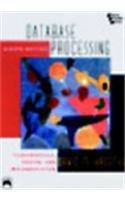Answered step by step
Verified Expert Solution
Question
1 Approved Answer
Please give me a code in c dont change any written code Thanks!! Description: Given two arrays of non-negative integers, denoted as arrA and arrB.
Please give me a code in c
dont change any written code
Thanks!!
Description: Given two arrays of non-negative integers, denoted as arrA and arrB. Please use the implemented ADT to complete the missing part of the following code: 1. create the setA and setB from the arrays arrA and arrB; 2. calculate the union of setA and setB, and print it out; 3. calculate the intersection of setA and setB, and print it out.
#include#include #define MAX_LEN 1024 #define INT_MIN -2147483648 // structure of Node struct Node { int elem; struct Node *next; }; // structure of Set struct Set { struct Node *nodes; }; struct Set *init_set(); // create an empty integer set. void free_set(struct Set *s); // free the memory allocated for set s void set_insert(struct Set *s, int x); // insert x into set s. struct Set *calc_intersection(struct Set *a, struct Set *b); // intersection of two sets struct Set *calc_union(struct Set *a, struct Set *b); // union of two sets void print_set(struct Set *s); // output the elements in the set in ascending order. /** * @brief: create an empty integer set * @param: void * @return: address of an empty set * @usage: struct Set* set_a = init_set() */ struct Set *init_set() { struct Set *tmp_set = (struct Set *)malloc(sizeof(struct Set)); tmp_set->nodes = NULL; return tmp_set; } /** * @brief: free the memory allocated for set s * @param: Set pointer s * @return: void * @usage: free_set(s) */ void free_set(struct Set *s) { if (s == NULL) return; struct Node *ptr = s->nodes; struct Node *next; while (ptr != NULL) { next = ptr->next; free(ptr); ptr = next; } free(s); } /** * @brief: insert x into integer set s * @param: 1. a Set pointer 2. the value you want to insert * @return: * @usage: set_insert(set_a, 2) */ void set_insert(struct Set *s, int x) { struct Node *temp = (struct Node *)malloc(sizeof(struct Node)); temp->elem = x; temp->next = s->nodes; s->nodes = temp; } /** * @brief: calculate the intersection of two sets * @param: two Set pointers * @return: a Set pointer of the intersection result * @usage: struct Set* set_result = calc_intersection(a, b) */ struct Set *calc_intersection(struct Set *a, struct Set *b) { struct Set *res = init_set(); struct Node *a_ptr, *b_ptr; a_ptr = a->nodes; while (a_ptr != NULL) { b_ptr = b->nodes; while (b_ptr != NULL) { if (a_ptr->elem == b_ptr->elem) { set_insert(res, a_ptr->elem); } b_ptr = b_ptr->next; } a_ptr = a_ptr->next; } return res; } /** * @brief: calculate the union of two sets * @param: two Set pointers * @return: a Set pointer of the union result * @usage: struct Set* set_result = calc_union(a, b) */ struct Set *calc_union(struct Set *a, struct Set *b) { struct Set *res = init_set(); struct Node *ptr; struct Node *tmp; ptr = a->nodes; for (ptr = a->nodes; ptr != NULL; ptr = ptr->next) { set_insert(res, ptr->elem); } for (ptr = b->nodes; ptr != NULL; ptr = ptr->next) { for (tmp = res->nodes; tmp != NULL; tmp = tmp->next) { if (tmp->elem == ptr->elem) { break; } } if (tmp == NULL) { set_insert(res, ptr->elem); } } return res; } /** * @brief: help function of the Set ADT, sort the elements of the set in * ascending order * @param: * @return: * @usage: */ void sort_in_ascending(struct Set *s) { if (s == NULL) return; struct Node dump; dump.elem = INT_MIN; dump.next = NULL; struct Node *head = &dump; struct Node *remaining = s->nodes; struct Node *insert_ptr, *ptr1, *ptr2; while (remaining != NULL) { insert_ptr = remaining; remaining = remaining->next; ptr1 = head->next; ptr2 = head; while (ptr1 != NULL && ptr1->elem < insert_ptr->elem) { ptr2 = ptr1; ptr1 = ptr1->next; } ptr2->next = insert_ptr; insert_ptr->next = ptr1; } s->nodes = head->next; dump.next = NULL; } /** * @brief: print the element of a Set in assending order * @param: 1. a Set pointer * @return: void * @usage: print_set(set_a) */ void print_set(struct Set *s) { if (s == NULL || s->nodes == NULL) { printf("NULL "); return; } sort_in_ascending(s); struct Node *tmp = s->nodes; while (tmp) { printf("%d ", tmp->elem); tmp = tmp->next; } printf(" "); } // 1. you should create setA and setB and use the provided ADT for initialization // 2. insert the elements in the array a and b into set A and B // 3. calculate the union of setA and setB, and print it out; // 4. calculate the intersection of setA and setB, and print it out. void union_and_intersection(int a[], int b[], int size_a, int size_b) { // WRITE YOUR CODE HERE!!!!!! } // DO NOT MODIFY THE CODE BELOW int main() { int i, x; int size_a; int size_b; int a[MAX_LEN]; int b[MAX_LEN]; scanf("%d", &size_a); scanf("%d", &size_b); int arr_a[size_a]; for (i = 0; i < size_a; i++) { scanf("%d", &a[i]); } for (i = 0; i < size_b; i++) { scanf("%d", &b[i]); } union_and_intersection(a, b, size_a, size_b); return 0; }
Input: Three lines, where: First line is two integers A and B; Second line is arrA of A non-negative integers; Third line is arrB of B non-negative integers; 0 <= A, B <= 10^3 Output: The first line is the union set The second line is the intersection set Sample Input 1: 2 3 5 6 7 5 8 Sample Output 1: 5 6 7 8 5
Please whether it is correct
Step by Step Solution
There are 3 Steps involved in it
Step: 1

Get Instant Access to Expert-Tailored Solutions
See step-by-step solutions with expert insights and AI powered tools for academic success
Step: 2

Step: 3

Ace Your Homework with AI
Get the answers you need in no time with our AI-driven, step-by-step assistance
Get Started


